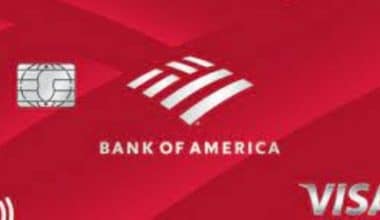In every project management process, project managers work to strike a balance between producing high-quality products and managing available resources. The project management triangle serves as a guide on how the three constraints of time, cost, and scope affect the general output of the project. We’ll discuss this in detail in this chapter.
Basic Concepts of the Project Management Triangle
The project management triangle is a model that illustrates the interdependence of three constraints: time, money, and scope, and how changing one factor requires changing the others.
Before the project begins, project managers and clients should finalize the project management triangle. All project stakeholders should grasp and agree on the project’s constraints, which will pave the way for sound decision-making in the best interests of the project’s overall outcome.
When project managers can identify the three core concepts of the project management triangle, they can work to produce the highest quality project feasible.
What Are the Elements Of The Project Management Triangle?
The project management triangle’s three most critical variables are often time, cost, and scope. These are commonly known as triple constraints of the project management triangle. Quality is usually referred to as the 4th element, but it is the focal point of the other three elements. So to say, the quality is dependent on how well the three constraints are managed. Let’s look at these three constraints of the project management triangle in detail
Time
Time is the amount of time it takes to execute activities (within a project) as well as the duration of the project itself. The timetable is another name for the time limitation. Timelines can be extended if the scope is expanded or the budget is reduced. For example, if the team size is reduced owing to budget constraints, the project may take longer to finish.
Any delays in obtaining resources or unexpected obstacles for the team might cause project delays, making it harder for project managers to complete the project within stated timeframes. Because time constraints are directly tied to project cost and scope, extending the timetable may result in more costs in the form of acquiring additional workers or other resources.
Possible Time Challenges
#1. Over-optimism
It’s usual for project managers to overestimate their team’s capabilities. To design a realistic plan, it is necessary to examine each team member’s productive abilities, workload, and existing conditions.
#2. External delays
If your project requires certain materials from a supplier, the delay in delivery may cause extra delays in the progress of your project. Project managers should contact the supplier on a regular basis so that they are aware of crucial delivery dates and times.
#3. Internal delays
Some tasks inside a project are interdependent, which means you can’t start one until the one before it is finished. Tasks that are postponed waste valuable time and money. As a result, project managers must regularly monitor job dependencies to ensure that they are finished on time.
#4. Demoralized employees
Loss of interest and motivation in employees, as well as an increase in absenteeism, are important issues that many project managers face. These problems must be resolved as quickly as feasible. Employees can become physically and emotionally exhausted by long-term projects. Even minor jobs can become tedious. Competent task management software can assist project members in assigning work to the appropriate personnel, guaranteeing a clear and equitable division of job duties.
#5. Staffing shortages
Many project delays occur owing to a shortage of trained workers. There could be a variety of reasons for this, including individuals being preoccupied with higher-priority projects, absenteeism, a weak PM strategy, and so on. Small personnel shortfalls can be filled by rearranging responsibilities, but major staffing issues necessitate the cooperation of key stakeholders, notably the project’s change management board.
Cost
Every project is given a set amount of money, commonly known as a budget. This money is needed to finish a project. Employee salary, money for tools and equipment, office space rent, and other resources may be included in the project cost. Increasing the size of the team or prolonging the time it takes to finish a project can also have an effect on the project cost.
Clients are always concerned about the expense of a project. It is critical for project managers to offer clients an accurate project estimate, which can be difficult. The project’s cost will certainly alter as the scope or dates deviate from the original design.
Possible Cost Challenges
- Underestimated project expenses
These might occur as a result of unrealistic or incorrect budget estimations. Another major reason could be a failure to foresee potential inefficiencies, such as resource scheduling conflicts.
- Poor accountability
Even a well-planned project budget might be exceeded if no duty is assigned to manage to spend, generate timely cost reports, and revise the budget. Someone should be assigned the task of budget monitoring.
- Delayed projects
These can cause budgets to be restructured to account for salaries, additional overheads, extended insurances (if applicable), and litigation costs if the delay violates service-level agreements.
- Increasing staff costs
This usually happens when more individuals are hired to deal with scope creep as the deadline changes. Every team member should be aware of the project’s scope from the start.
Scope
The project scope is a section of the project plan that lists particular tasks, projects, goals, deliverables, and dates. The project scope statement includes the following sections: Statement of Work, Scope Exclusions, Constraints, Milestones, Final Deliverables, Acceptance Criteria, and Client Final Approval.
The scope constraint gives project managers goals and allows them to estimate project costs and schedule all tasks for the appropriate people. Any changes to the project scope at any stage might have a negative impact on its development, compelling project managers to either delay delivery dates or add more labor costs, or both.
Possible Scope Challenges
- Vague requirements
Scope creep can derail even the best-planned initiatives. Thus, haphazardly planned projects are more likely to fail. The absence of precise, detailed requirements might result in project misconception and scope creep.
- Additional feature requests
Adding new features to the project is only recommended when the project timetable and budget allow for it. Even if project managers believe that new features will help the project, regardless, they should not allow feature creep to stray the project from its intended path.
- Variable specifications
Uncertain project specifications expose your project to scope creep. Making last-minute adjustments to the project, for example, or clients requesting additional work, can affect both the budget and the timeline. Project managers should document all critical deliverables, budgets, deadlines, and so on and have everyone involved in the project sign off on them.
- Internal considerations
Other external elements are beyond the project managers’ control. However, if other internal issues, such as stakeholders requesting a fresh set of deliverables, threaten to derail the entire project, the project manager should assert his or her authority and defend the project plan.
Quality As A Result Of Time, Cost, and Scope
Quality = Time + Cost + Scope
As previously stated, the fourth variable in the project management triangle (otherwise known as “the iron triangle” or “the golden triangle”) is quality. This factor, located in the center, is directly influenced when any of the other three variables of Time, Scope, and Cost are changed.
If your project is ahead of schedule, for example, you may wish to devote additional time to current tasks, which may result in a superior product. Quality is no longer constrained by any predefined criterion. For some clients, quality means staying within a project’s budget, while for others, it means getting it to market on time. A project manager must determine how the company defines quality for the given project.
How the Project Management Triangle Affects Project Success
Every project has specific requirements that everyone must agree on before the project begins. The project management triangle assists project managers in understanding the boundaries of a project, allowing them to make better decisions.
Let’s take a deeper look at some of the advantages of the Golden triangle:
- The project management triangle enables project managers to evaluate various external influences and their possible impact on one or more project management triangle “variables.”
- Project managers can use the PM triangle to keep track of their project’s budgets, timelines, and scope. This model can be customized to meet the needs of practically any project.
- The project management triangle proves that projects cannot be good, cheap, and fast all at the same time. This model demonstrates how and where project managers should make adjustments or compromises if changes to any of the variables are unavoidable.
- Many projects fail due to a lack of communication. A project management triangle is a visual tool that project managers can use to demonstrate the relationship between all three variables, allowing team members and stakeholders to fully comprehend the required changes.
Managing the Three Constraints In The Project Management Triangle
Here are some real solutions to reconcile the project management triangle’s restrictions.
- Communicate with stakeholders: Consult with stakeholders to determine what changes are acceptable and which constraints should be prioritized. Is the deadline unmovable, and is the budget constrained? This will give you a sense of how the project can adjust if changes are required. This is an important step in the early stages of the project, but communication should be ongoing throughout.
- Establish risk management processes: Risk planning should be a phase in your project management process to avoid scope creep and stay on budget and on time. Identify the hazards, then devise a plan to mitigate each one. If you want more information, read about how to handle project risks.
- Create change management processes: Change is almost always unavoidable. A change management process establishes a standardized method for modifications to be approved or refused. This keeps the team informed of changes as they occur and how they affect the project. This can also help to limit scope creep.
- Choose a methodology based on restrictions: Depending on the constraints you face, you may decide to choose a project management approach. Waterfall-style procedures are frequently used to manage projects with severe constraints. If you need more flexibility, an Agile process like Scrum would be more suited. A Lean approach can help with projects where inefficiencies must be reduced as much as possible.
Agile Methodology and the Project Management Triangle
While the Agile methodology only appeared in 2001, the project management triangle, sometimes known as the iron triangle, has been in use since the 1950s. It used to be a very important technique for understanding the balance of triple constraints in project delivery.
Many project teams asked if the classic project management triangle could still be used when adopting newly presented approaches such as Agile as novel project management frameworks were released.
The fundamental difference between the two is that, although in traditional project management, the three constraints (scope, time, and budget) were specified at the start of the project, the Agile methodology takes an iterative approach, allowing these project components to grow.
Because triple restrictions are prevalent, Agile flips this on its head.
Traditional project management allows for cost and time variations while keeping the scope fixed. As a result, both time and cost are changed to develop a workable strategy. The difficulty with this technique is that the scope of a project changes frequently during its lifecycle, affecting both time and expense. As a result, all three limitations are adjusted, resulting in increased costs and delayed deliveries. Even though the project was completed, stakeholders were dissatisfied owing to increased expenses and delays.
The agile technique, on the other hand, keeps costs and timelines fixed while allowing for scope changes. As a result, agilists devised an inverted triple constraint triangle. Because the goal is to achieve the client’s high-priority requirements within the specified cost and time, agile permits the scope to vary over time. As the project proceeds, agile allows for re-prioritization.
How Can The Iron Triangle Be Used in Project Management?
Every project must balance the three most prevalent constraints any project: time, money, and scope. One variable cannot be changed without influencing at least one of the others.
The project manager must handle the tradeoffs between the three sides of the triple constraint triangle efficiently. These limits serve as a visual reminder of how decisions may affect other aspects of your project.
The smart and integrated balance of all three project constraints can decide the overall project quality. These aspects cannot be balanced separately. The PMI (Project Management Institute) article “Beyond the Iron Triangle” underlines that project managers should consider soft elements (morale, interest, and societal expectations) as these can affect projects just as much as the three restrictions of the project management triangle.
What Is The Golden Triangle In Project Management?
The golden triangle is what we’ve been discussing in this chapter. It is simply another name for the project management triangle. It is also called the iron triangle.
What Are The Three Parts Of a Project?
The three parts of a project are budget, timeline, and scope. They make up the project management triangle.
How can project managers prioritize the constraints of the project management triangle?
Project managers can prioritize the constraints of the project management triangle by identifying the most important objectives of the project and aligning them with the scope, schedule, and cost constraints. They can also use techniques such as the 80/20 rule, where they focus on the 20% of the project that will have the biggest impact and prioritize accordingly.
How does the project management triangle relate to project quality?
The project management triangle relates to project quality in that the scope, schedule, and cost constraints all have an impact on the final quality of the project deliverables. A project manager must balance these constraints to ensure that the project is delivered on time, within budget, and to the desired quality level.
How does the project management triangle apply to virtual projects?
The project management triangle applies to virtual projects in the same way as it does to any other project. Virtual projects may have some unique challenges, such as communication and coordination among team members who are working remotely, but the project management triangle can still be used to manage the scope, schedule, and cost constraints of the project.
What are some common challenges faced by project managers when trying to balance the constraints of the project management triangle?
Some common challenges faced by project managers when trying to balance the constraints of the project management triangle include scope creep, unexpected changes in the project, lack of resources, unrealistic timelines, and budget overruns. Project managers must be able to identify and manage these challenges effectively to ensure that the project is delivered on time, within budget, and to the desired quality level.
How can project managers use the project management triangle to communicate project status to stakeholders?
By constantly updating stakeholders on the state of the project and ensuring that it adheres to the scope, schedule, and budget restrictions, project managers can use the project management triangle to effectively communicate project status. This can be accomplished through recurring project status reports, project dashboards, or other forms of communication that give stakeholders access to information about the project’s status and potential problems. The project management triangle can also be used by project managers as a visual aid to clarify trade-offs and decisions made and aid stakeholders in understanding the project’s progress.
How does the project management triangle apply to outsourcing projects?
The project management triangle is the same for all projects, including those that include outsourcing. Projects that are outsourced will have particular difficulties managing the scope, timeline, and budget restrictions across many time zones, cultures, and languages. The scope, time, and money restrictions can still be managed, as well as any hazards, using the project management triangle as a framework.
How can project managers use the project management triangle to improve project performance?
By using it as a framework to recognize and manage the project’s scope, time, and cost constraints, project managers can use the project management triangle to enhance project performance. Project managers may guarantee that the project is delivered on schedule, within budget, and at the intended quality level by routinely reviewing and revising the project plan and making trade-offs between the restrictions as necessary. The project management triangle can also be used by project managers to better communicate with stakeholders, identify and manage potential risks, and enhance project performance.
In Conclusion
The quality of your project depends on how well the three constraints in the project management triangle are managed. Mismanagement of these three elements will most likely throw your project off course and bring it crashing down. To help you successfully manage these three constraints, you can look for project management tools online. There are lots of them to choose from!
Frequently Asked Questions
What is the project management triangle called?
The project management triangle is called the triple constraints triangle or the iron triangle.
Is the iron triangle outdated?
Although the iron triangle is no more frequently used to measure a project’s success, it is not yet outdated.
Who invented the project management triangle?
Martin Barnes invented the project management triangle.
Related Articles
- Project Scope Statement: Guide for Creating a Scope Statement with Examples
- Project Scope Management: Definition & Scope Management Plan Examples
- PROJECT TRACKING SOFTWARE: Reviews of Top 25 Project Tracking Software
- HOW TO GET INTO PROJECT MANAGEMENT: Definition, Guide and Requirment






